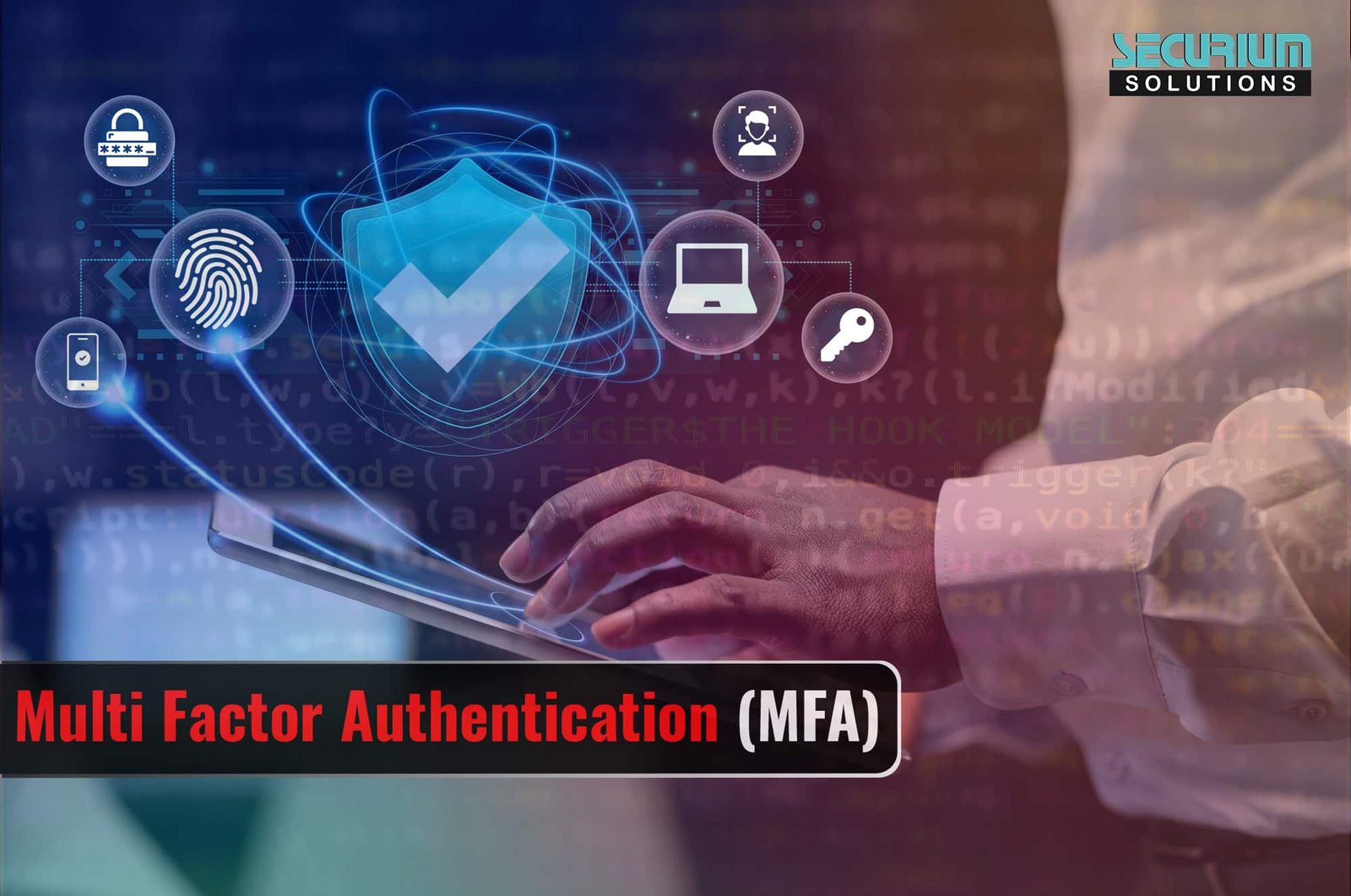May 02, 2023 / By Securium Solutions
In today’s world where cybercrime is a major threat to online security, passwords alone are not enough to protect your account. This is why multi factor authentication has become an important part of online security. This blog post discusses the importance of MFA, different types of his MFA, and how to set up his MFA on popular platforms like Google, Facebook, Microsoft, Salesforce and many more.
What is Multi Factor Authentication?
Multi Factor authentication (MFA) is an authentication process that requires users to provide two or more forms of identification before gaining access to a system or application. These factors can be something the user knows, such as a password, something the user has, such as a mobile phone or security token, or something the user is, such as biometric data like a fingerprint.
MFA is based on the principle of “something you know, something you have, or something you are.” The first factor is something the user knows, such as a password or PIN. The second factor is something the user has, such as a mobile phone or security token. The third factor is something the user is, such as biometric data like a fingerprint or facial recognition.
The importance of multi-factor authentication in cybersecurity
In today’s world, cyber dangers are getting to be more modern, making it less demanding for cybercriminals to take passwords and pick up get to to accounts. That’s where MFA comes in, because it includes an extra layer of security that produces it more challenging for programmers to get to an account indeed in the event that they oversee to get the secret word. With MFA, indeed in the event that a hacker gets hold of the watchword, they still got to give extra verification variables to pick up get to to the account.
Types of multi-factor authentication
There are several types of Multi Factor Authentication. Some of the most common ones are:
SMS authentication – This type of MFA involves the use of a mobile phone number to receive a unique code that you enter into the application or system to verify your identity.
Authentication app – An authentication app generates a unique code every few seconds that you use to verify your identity. Popular authentication apps include Google Authenticator, Microsoft Authenticator, and Authy.
Hardware token – This type of MFA involves the use of a physical device such as Yubikey or RSA SecurID to generate a unique code that you use to verify your identity.
Biometric authentication – Biometric authentication uses your unique physical characteristics such as facial recognition or fingerprint to verify your identity.
How to set up multi-factor authentication
Setting up multi-factor authentication is simple and easy. Here is a step-by-step guide on how to set it up on some popular platforms:
1. Google
To set up MFA on your Google account, follow these steps:
- Sign in to your Google account and go to the “Security” page.
- Under the “Signing in to Google” section, select “2-Step Verification“
- Follow the prompts to add your phone number and choose your preferred a authentication method, such as text message or Google Authenticator app.
2. Microsoft
To set up MFA on your Microsoft account, follow these steps:
- Sign in to your Microsoft account and go to the “Security” page.
- Under the “Security info” section, select “Add method” and choose your preferred authentication method.
- Follow the prompts to complete the setup process.
3.Salesforce
To set up MFA on your Salesforce account, follow these steps:
- Sign in to your Salesforce account and go to the “Security” page.
- Under the “Two-factor authentication” section, select “Configure.”
- Follow the prompts to choose your preferred authentication method, such as text message or authentication app.
4.Azure
To set up MFA on Azure, follow these steps:
- Sign in to the Azure portal and go to the “Azure Active Directory” page.
- Under the “Security” section, select “Multi-factor authentication.”
- Follow the prompts to set up MFA for your account.
Examples of multi-factor authentication
Some common examples of MFA include:
SMS authentication: This method involves receiving a unique code via text message to your phone number, which you then enter into the website or application to verify your identity.
Authentication apps: These apps generate a unique code every 30 seconds that you enter into the website or application to verify your identity. Popular authentication apps include Google Authenticator and Microsoft Authenticator.
Hardware tokens: These are small physical devices that generate unique codes that you enter into the website or application to verify your identity. Examples include the YubiKey and RSA SecurID.
Biometric authentication: This involves using your unique physical characteristics, such as your fingerprint or facial recognition, to verify your identity.
Summary:
In conclusion, multi-factor authentication (MFA) is a crucial security feature that provides an extra layer of protection to online accounts. By requiring users to provide multiple forms of authentication, MFA makes it more difficult for cybercriminals to gain unauthorized access to sensitive information. There are different types of MFA available, including SMS authentication, authentication apps, hardware tokens, and biometric authentication. The setup process for MFA varies depending on the platform, but it generally involves adding an extra layer of security to the authentication process. As cyber threats continue to evolve, it is essential that individuals and organizations take advantage of MFA to secure their online accounts and protect their sensitive information.
Author
Abdul Mannan
Cyber Security Intern




